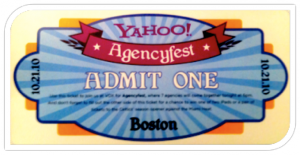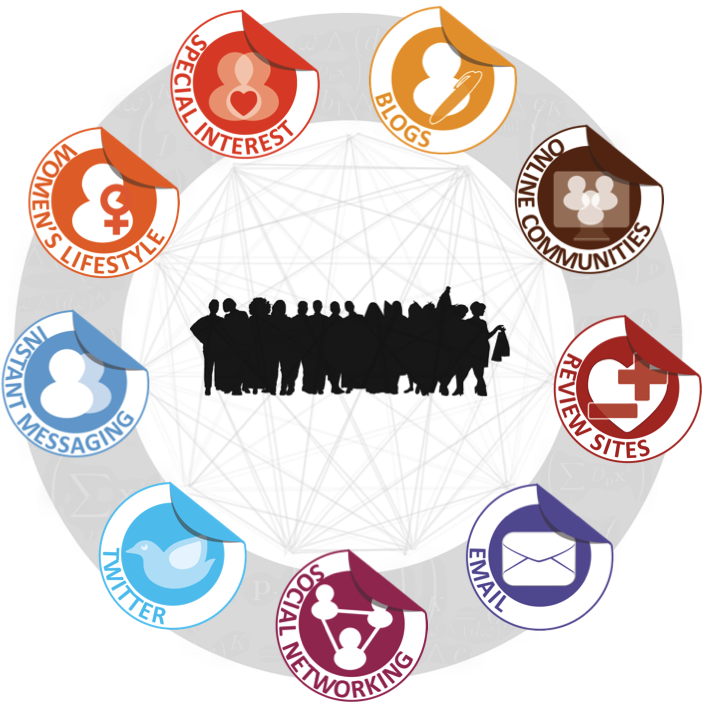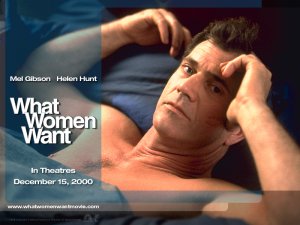Sigmund Freud once said, “The great question that has never been answered, and which I have not yet been able to answer, despite my thirty years of research into the feminine soul, is ‘What does a woman want?’” And while Mel Gibson did a pretty good job shaking things down a few years ago, yesterday Yahoo! put some data behind answering Freud’s question.
Yahoo! was all over Boston as part of their day-long Agencyfest, sharing recent marketing research with area agencies. BostInno had the opportunity to join the Agencyfest session with the innovative minds over at Digitas. The session was all about what Yahoo! has dubbed, “connectonomics” – the study of how online channels fulfill needs, and how marketers can make the most out of these connections.
Why the focus on women? Consider that when women have “me time,” 92% choose to go online. And when they are online, almost half (43% to be exact) of that time is spent connecting with others. Coupled with women making 85% of brand decisions, Yahoo! set out to identify what drives women online. They went on to examine how various online channels map back to those drivers in an effort to help ignite more innovative, effective marketing.
Yahoo!’s Director of Market Research, Edwin Wong, led the session which was structured around the idea that marketing effectiveness is a function of needs, channels, and ad receptivity:
Needs: Why do women go online?
In their initial research, Yahoo! unearthed 100 reasons that drive women online. These ultimately fell into 16 different need states. The most prevalent need they iden

tified: women go online because they want to be a better version of themselves. Wong went on to explain that women are looking most for opportunities for personal growth (shopping smarter, staying in touch with old friends, developing expertise, etc.) and to connect with other people.
Most interesting is that Yahoo! found women are far more similar than different online. No matter if a woman is working or at home, old or young, with children or without, and despite profession, need state patterns in the research findings were consistent.
This was not the case in their preliminary research studying men, in which they found 26 need states. Wong noted that while women take what they do offline and consider their online activity incremental, for men it is actually substitutional. So when it comes to online behavior, women are in fact far less complicated than men.
Channels: How do online channels fulfill needs?
After identifying the driving factors behind why women are online, Yahoo! honed in on how channels deliver on those needs. Their research finds that women lifestyle sites such as iVillage fulfill nearly all 16 needs. These channels do so by helping women both be more satisfied emotionally and be smarter consumers. Below are takeaways from how the other eight online channels fulfill women’s needs online:

- Special interest sites: These allow women to meet other people like them, but not actually get to know them.
- Review sites: These offer information that make women feel smarter and more enabled.
- Blogs: These fulfill needs of self improvement, being in the know, and pushing the limits.
- Online communities: These connect people with others around the same things, tapping into identity needs which women are extremely passionate about.
- Email: This fulfills care of self and control needs, used primarily for “important things to say” as well as receiving deals that make them a smarter consumer.
- Instant message: These fulfill instant and informal communication needs.
- Twitter: This channel is all about feeling smarter and better, providing real-time currency and constant connection.
- Social Networks: These are about being close but not too close (with connections beyond their immediate circle), and mutual sharing.
Yahoo! stressed that when it comes to mapping needs across channels to deliver effective marketing, it is not one need to one channel. Instead, it is best to think holistically across all.
Receptivity: When are women most receptive to marketing messages?
Women’s lifestyle sites were also the channel Yahoo! identified as being the best place to have an advertisement. Across all channels, women were most receptive of marketing messaging and advertisements on content-rich sites. Wong explained these offer opportunities for women to gain expertise and to forge relationships and connections around that content. On the other end of the spectrum, Wong noted that women who participated in their research were considerably less accepting of ads they see on Facebook, identifying them as intrusive in what they saw as a “more personal space.”

After Wong’s presentation, BostInno had the opportunity to speak with Beth Taylor, SVP and Media Director at Digitas on her takeaways from the session:
“The finding that need states for women are so similar – no matter your age, your profession or your lifestage – is fascinating. What I thought was particularly interesting was when he compared that to men, where there are dramatic differences. It got me thinking a lot about why women are so similar.”
Thank you to Digitas for hosting the session, and to Yahoo! for sharing their research.

